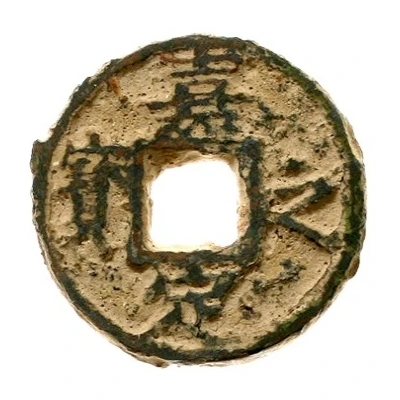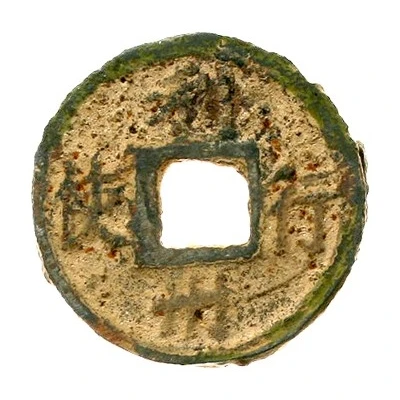


© Teutoburger Münzauktion
2 Cash - Jiading Zhibao; type 2; Li Zhou; iron ND
| Iron | 9.83 g | 30 mm |
| Issuer | Empire of China |
|---|---|
| Emperor | Southern Song dynasty › Ningzong (宋寧宗) (1194-1224) |
| Type | Circulating commemorative coin |
| Years | 1208-1224 |
| Value | 2 Cash |
| Currency | Cash (621-1912) |
| Composition | Iron |
| Weight | 9.83 g |
| Diameter | 30 mm |
| Thickness | 2.7 mm |
| Shape | Round with a square hole |
| Technique | Cast |
| Orientation | Medal alignment ↑↑ |
| Demonetized | Yes |
| Updated | 2024-10-04 |
| Numista | N#167634 |
|---|---|
| Rarity index | 95% |
Reverse
Four Chinese ideograms read top to bottom, right to left (in Regular script).
Script: Chinese (traditional, regular script)
Lettering:
利
使 行
州
Translation:
Li Zhou Xing Shi
For Lizhou's (city) use
Edge
Plain
Comment
During the Jiading era, in addition to the regular Tongbao, Yuanbao, and Zhongbao coins, various other currency names are used:- 安寶 (Anbao; peaceful currency)
- 崇寶 (Chongbao; noble currency)
- 大寶 (Dabao; large currency)
- 封寶 (Fengbao; honoured currency)
- 洪寶 (Hongbao; great currency)
- 隆寶 (Longbao; eminent currency)
- 泉寶 (Quanbao; type 1; wealthy currency)
- 全寶 (Quanbao; type 2; perfect currency)
- 万寶 (Wanbao; uncountable currency)
- 新寶 (Xinbao; new currency)
- 興寶 (Xingbao; prosperous currency)
- 永寶 (Yongbao; everlasting currency)
- 真寶 (Zhenbao; type 1; true currency)
- 珍寶 (Zhenbao; type 2; precious currency)
- 正寶 (Zhengbao; orthodox currency)
- 至寶 (Zhibao; type 1; best currency)
- 之寶 (Zhibao; type 2; the currency)
These all appear to be from mints in Sichuan; however, the exact purpose of these pieces (collectively known as the substitution series) is uncertain.
One possible theory is that, because the Jiading era lasted 24 years and there are exactly 24 coin in this series, a different currency name was used each year.
Interesting fact
One interesting fact about this coin is that it was made of iron, which was a unusual choice of material for coins at that time, as most coins were made of copper, silver or gold. The use of iron suggests that the mint was experimenting with different materials, or that iron was more readily available and less expensive than other metals. This coin's unique composition makes it stand out among other coins of the time and adds to its historical significance.